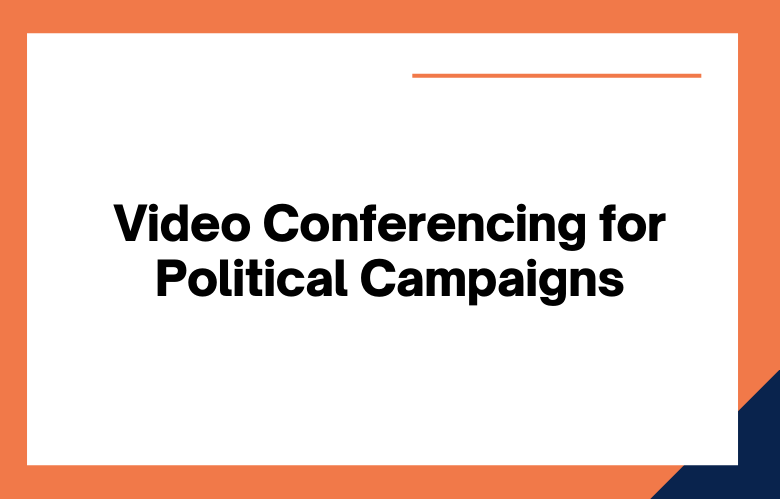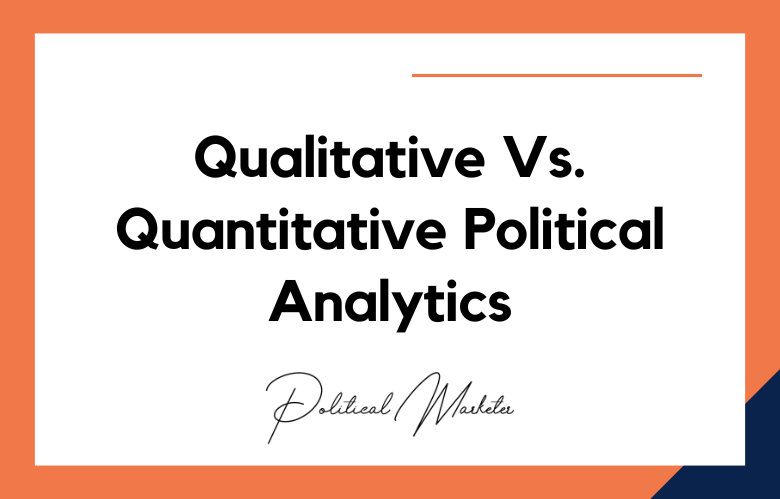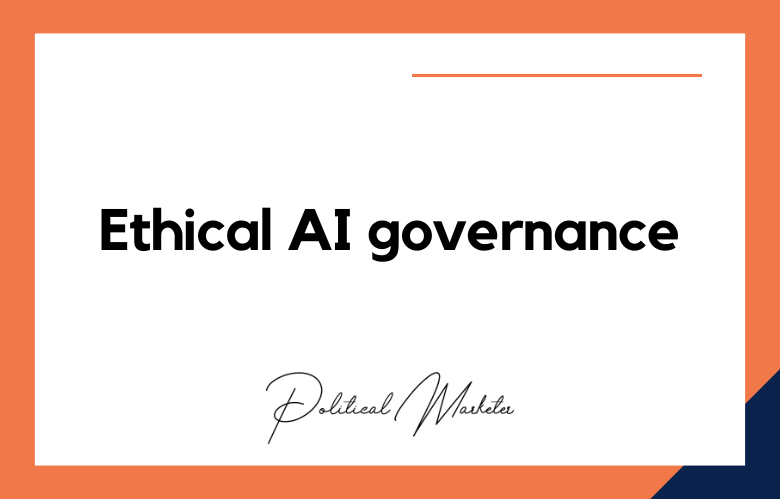You are probably sick of all the political ads and mailers clogging up your mailbox if you are like the people. It seems like there’s no escape from the bombardment of campaign rhetoric.
But is there a way to get involved in the political process without leaving your house? Believe it or not, video conferencing may be the answer.
Political campaigns and governments are starting to use video conferencing to connect with constituents in new and innovative ways.
So far, the results have been promising. Continue reading to learn more about how video conferencing is used for politics and what this technology can do for you.
It’s no secret that video conferencing is revolutionizing how we do business.
Video conferencing is essential for communication and collaboration between small businesses to multinational corporations.
So it’s no surprise that political campaigns and governments are increasingly using video conferencing. Here are just a few ways political campaigns and governments can use video conferencing:
- They hold town hall meetings with citizens from all over the country or the world.
- We are conducting interviews with potential candidates or cabinet members.
- We are facilitating press conferences with government officials or international leaders.
- They are holding strategy sessions with campaign staff or cabinet members.
Video Conferencing for Political Campaigns
Video conferencing promises to revolutionize political campaigning. No longer will candidates be confined to shaking hands and kissing babies in their home districts. Now they can reach out to voters anywhere in the world instantly.
This new technology offers endless possibilities for creative campaigning. For example, imagine a presidential candidate addressing a rally in Times Square while holograms of him speaking appear in dozens of other cities.
Or what about campaigns that allow voters to participate in interactive debates with candidates? These events would bring the election process alive for people who usually feel left out or uninvolved.
Whatever form it takes, video conferencing will significantly impact political campaigns in the future.
Video conferencing can be an excellent tool for political campaigns. It allows candidates to reach a wider audience and connect with potential voters directly.
Conferencing can be an excellent tool for candidates to reach a wider audience and directly connect with potential voters. Video conferencing can help political campaigns reach a more significant, diverse group of people. It allows for more connection and engagement with likely voters.
Businesses and politicians increasingly use video conferencing to communicate with customers, employees, and constituents.
Video conferencing has several advantages over traditional methods of communication, such as face-to-face meetings or phone calls.
For one, video conferencing can save time and money by eliminating the need for travel.
It can also allow more people to participate in a meeting or conversation, regardless of geographic location.
Lastly, video conferencing can help create a more personal connection between the participants.
With video conferencing technology, political campaigns can now reach a larger audience. No longer are they limited to face-to-face interactions and rallies.
Now, with video conferencing, political campaigns can reach out to voters all over the country and even the world. This new form of campaigning makes it possible to connect with more people. It also opens up new opportunities for campaign donors and volunteers.
Video Conferencing for Governments
The internet is possible for people to connect from all over the world. It led to a new form of communication: video conferencing.
Video conferencing allows us o see and hear each other in real time, no matter where they are. Governments are now using this technology to help them communicate with each other and their citizens.
Governments must keep up with the times and integrate newer technologies into their communication methods. Video conferencing is one example of cutting-edge technology that can be used to bridge the communication gap. Government officials can connect instantaneously by conducting video conferences, regardless of location. Whether communicating within the same country or globally, video conferencing provides government officials with a fast and efficient way to share information.
Government officials are always looking for ways to be more efficient. One way they have embraced this in recent years is through video conferencing.
It allows officials to meet without traveling, which saves time and money. It also cuts down on paper use, as information is shared electronically.
Video conferencing is an excellent tool for governments to be greener and save resources.
Governments all over the world realize the potential of video conferencing. By using this technology, they can communicate with each other more effectively and efficiently. It results in improved decision-making and better governance.
Many governments are now using video conferencing to help improve communication and collaboration. This technology allows officials to have real-time conversations with each other, no matter where they are. Video conferencing is helping to make government operations more efficient and effective.
There’s no question that video conferencing is revolutionizing the way governments communicate. Around the world, government officials use video conferencing to connect with their constituents.
Video conferencing allows government officials to have face-to-face meetings without traveling. It saves time and money and reduces the carbon footprint of government operations.
Most importantly, video conferencing enables government officials to stay connected and make decisions promptly. In today’s fast-paced world, that’s more important than ever.
Video Conferencing Best Practices for Political Campaigns
- Dress professionally for all video conferences
- Test the audio and video before the call begins
- Use a headset or earbuds to reduce background noise
- Speak clearly and at a moderate volume
- Avoid eating, drinking, or smoking during the call
- Be aware of your body language- sit up straight with your hands on your lap or at your sides
- Exit the ring gracefully when it’s over
- Always be prepared before your video conference call
- Test your equipment beforehand
- Try to use a webcam instead of just your computer’s built-in camera
- Keep any background noise to a minimum
- Be aware of how you’re coming across to the other participants
- Test your audio and video equipment before the call begins
- Introduce yourself and other participants at the beginning of the call
- Keep conversations brief and to the point
- Thank participants for their time at the end of the call
- Establish a clear purpose for the video conference
- Make sure all participants are aware of the meeting’s agenda and objectives
- Begin the discussion by introducing everyone involved
- Keep sessions short and to the point
- Avoid distractions during the meeting
- Thank everyone for their time when the panels get finished
- Dress appropriately for the occasion- business casual is always a safe bet
- Make sure your surroundings are quiet and free of distractions
- Test your equipment beforehand to make sure everything is working properly
- Greet everyone in the video call before starting the meeting
- Make sure to look at the camera when speaking, not just at the person you’re talking to
- Keep sessions short- no one wants to sit through a long-winded discussion
- End meetings on time and follow up with participants afterward
- Test your audio and video settings before the call begins
- Speak clearly and at a moderate volume
- Avoid eating or drinking during the call
- Stay focused on the conversation and avoid distractions
- Be aware of body language- sit up straight, make eye contact, and use hand gestures to express yourself
- Thank participants for their time once the call has ended
- Introduce yourself and others on the call
- Keep conversations brief and to the point
- Avoid eating or drinking during the call
- Always test your video conferencing equipment before the meeting starts
- Make everyone can see and hear each other clearly
- Keep background noise to a minimum
- Avoid eating or drinking during the meeting
- Stay focused on the conversation and avoid checking your phone or computer screen.
- If you want to take a break, let everyone know in advance
- Introduce yourself and others on the call
- Keep your background clean and distraction-free
- Don’t take calls on speakerphone
- Avoid talking over others
- Use body language to convey professionalism.
Conclusion
Contact us for Political Video Conferencing Consulting. Video conferencing for political campaigns and governments can provide many benefits.
It is a great way to connect with people worldwide, get immediate feedback, and hold meetings without traveling.
Our team has experience setting up video conferences for these organizations.
Let us help you set up your next meeting and take advantage of all the benefits video conferencing offers.
One way to get in touch is by filling out our online form on this site or give us a call at
+91 9848321284. Let’s work together today!
Video Conferencing for Political Campaigns and Governments: FAQs
What Is Video Conferencing in Political Campaigns?
Video conferencing allows real-time audiovisual meetings online, enabling candidates to connect with voters without being physically present.
How Are Town Halls Conducted via Video Conferencing?
Campaigns and governments host virtual town halls that allow participants from across regions to join, ask questions, and interact live.
Can Video Conferencing Replace Physical Rallies?
It offers a scalable alternative, enabling candidates to reach audiences globally, supplementing traditional in-person events.
What Are Virtual Candidate Interviews?
These are live sessions where campaign teams interview potential candidates or officials through video apps.
How Are Press Conferences Held Virtually?
Government or campaign teams stream press events online, enabling media and public access irrespective of location.
What Are Strategy Sessions via Video Conference?
Campaign staff or government officials discuss tactics, planning, and coordination in remote strategy meetings.
How Does Video Conferencing Save Time and Money?
By eliminating travel needs, video calls significantly reduce logistical expenses and time spent commuting.
Can Video Conferencing Increase Participation?
Yes. It allows a broader, more diverse audience to join campaigns, regardless of geographic constraints.
Does Video Conferencing Enhance Personal Connection?
Seeing and hearing candidates directly fosters a deeper sense of engagement and proximity.
How Do Campaigns Prepare for Effective Video Conferences?
Best practices include professional dress, equipment tests, headset use, clear speech, and minimal distractions.
Why Is Testing Equipment Beforehand Important?
Pre-checking audio and video quality avoids technical disruptions that can undermine credibility.
What Are Dressing Guidelines for Video Conferences?
Dress in professional attire and use a clean, distraction-free background to maintain authority and focus.
How Should Participants Manage Body Language?
Sit upright, maintain eye contact with the camera, and use purposeful gestures to appear engaged.
Why Avoid Eating or Drinking on Camera?
Such behaviors appear unprofessional and can distract both presenter and audience.
What Strategies Ensure Clarity During Calls?
Speak clearly, at a moderate pace, and consider using headsets to minimize background noise.
How Can Background Noise Be Minimized?
Use headphones, select a quiet environment, and mute when not speaking to avoid distractions.
Why Keep Sessions Short and Focused?
Brief, agenda-driven meetings are more effective and respectful of participants’ time.
How Should Meetings End for Maximum Impact?
Finish with gratitude, ensure follow-up, and exit gracefully to leave a positive lasting impression.
Can Video Conferencing Reduce Environmental Impact?
Yes. By cutting down on travel, it supports sustainability by lowering the campaign’s carbon footprint.











